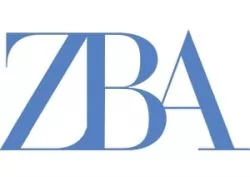1. Introduction
Covid-19 related stress severely impacted all aspects of the Indian economy including the nascent insolvency regime under the Insolvency and Bankruptcy Code, 2016 ("Code"). The financial stability report ("FSR") of December 2020 released by the Reserve Bank of India ("RBI") predicts a sharp rise in the gross non-performing assets of banks by September 20211. The FSR predicts uncertainty in the economic recovery path although it assures that the worst is behind. Needless to say, economic recovery is impossible without resolution of bad debts and especially Covid-19 defaults. Consequently, the report of sub-committee of Insolvency Law Committee on the pre-packaged insolvency resolution process (PPIRP) published on 8 January 2021 by the Ministry of Company Affairs is a timely and decisive intervention. This article summarises the basic framework of the proposed PPIRP, challenges and potential implementation concerns.
2. Basic Framework- Trusting the Debtor
- Debtor-in possession: The PPIRP framework is significantly different in its philosophy compared to resolution approach under the Code as it shifts from creditor-in possession to debtor-in possession regime, with a certain degree of control by creditors. Going a step further, the PPIRP framework proposes that only a corporate debtor ("CD") can initiate the PPIRP approved by a simple majority of unrelated financial creditors ("FCs"). Consequently, unlike a corporate insolvency resolution process ("CIRP"), creditors of a CD will not be able to initiate the PPIRP, although, they can refuse to confirm commencement. The reason behind this is that the pre-pack is a voluntary consensual process between debtors and creditors to resolve stress. Any resolution through pre-pack mechanism requires active support of the CD and its management. We are of view that a higher FC vote threshold of 66% as opposed to 50% means creditors have to determine upfront for each company whether restructuring or insolvency under the Code is better for all stakeholders. Having a higher threshold on commencement results in a high probability of a final plan being approved.
- Limited role of resolution professional: The role of resolution professionals during the PPIRP is mostly supervisory in nature and not managing the CD like in a CIRP under the Code. The resolution professionals have to work in tandem with the management of the CD who continue to manage the CD especially for collation of claims, preparation of information memorandum ("IM"), reporting avoidance transactions, and ensuring transparency and fairness of the entire process, safeguard stakeholders interests and compliance with laws. There is scope for friction between resolution professional and management of the CD, however, as highlighted earlier, the premise of the PPIRP is the willingness of the management of the CD to resolve the CD - without which pre-pack cannot be a viable option for resolution. Resolution professionals will need to be careful to avoid conflict of interest and maintain their independence and objectivity as required as regulated persons by the Insolvency and Bankruptcy Board of India ("IBBI"). The PRIRP framework does not provide for replacement of resolution professional, which we think is not in the best interests and FCs should have the option to replace a resolution professional if unsatisfied.
- Commercial wisdom of CoC paramount: The PPIRP framework is consistent with the Code's most striking feature that commercial wisdom of the committee of creditors ("CoC") is paramount. The CoC is empowered to approve or reject a resolution plan, terminate the entire pre-pack process if the conduct of the CD is unsatisfactory, propose liquidation and approve or reject matters under section 282 of the Code. Therefore, promoters will need to be authentic and genuine in utilising this tool.
- Value maximisation: The PPIRP framework recognises the importance of value maximisation of the assets of the CD and proposes to achieve the same by allowing the entire market to compete to submit resolution plans. The pre-pack starts with a base resolution plan. If promoters are eligible under section 29A of the Code, then they can submit the base resolution plan and if promoters are not eligible then creditors arrange for a base plan. The base plan is approved without swiss challenge if there is no impairment to operational creditors ("OCs"). In any other case, the base plan needs a swiss challenge auction with liquidation value ensured to OCs and dissenting FCs as required under the Code3.
3. PPIRP and Insolvency Process under the Code - The Interplay
The PPIRP framework recognises pre-pack process as an option under the Code and accordingly, the framework philosophically is in accordance with the Code's objectives. Whether this is feasible for a PPIRP is yet to be seen and in may cause practical constraints. Some of these are set out below:
- Moratorium (section 14): The moratorium under section 14 of the Code applies to PPRIP in the same manner as it does to the insolvency process under the Code. Undoubtedly, there is a high chance of promoters misusing the moratorium, however, the PPIRP framework has tried to balance this by empowering the CoC to terminate the PPIRP if CoC has any doubt on the intention of promoters.
- Public announcement (section 15): The submission of claims is the CD's responsibility based on its records and accordingly, the framework does not propose public announcement of claims. If claims are not considered, by the CD it may lead to disputes and there may be differences between FCs and a CD on the amounts due e.g. calculation of interest, rates used etc. However, the PPIRP framework presumes that if a promoter is willing to resolve the CD then he must come clean and disclose information with complete transparency. To avoid controversy, we are of the view that statutory auditor should be empowered to confirm the claim amounts.
- Approval of CoC: Requirement for approval from the CoC for certain actions as provided in section 28 of the Code e.g. raising of interim finance, change in capital structure, amendment to constitutional documents, change in ownership structure, creation of security interest applies to the PPIRP without modification. This is positive for creditors and will be helpful in keeping the CD "in check".
- Preparation of information memorandum: The PPIRP framework proposes preparation of the IM by a CD (with certification by the Chairman/Managing Director for completeness and accuracy) unlike the CIRP wherein the IM is prepared by the resolution professional. The resolution professional must ensure transparency and accuracy of the information shared by the CD. Ideally, in our view, the legal framework should provide for minimum contents of the IM and such IM should be prepared before going to shareholders and FCs for commencement of PPIRP.
- Persons not eligible to be resolution applicant (Section 29A): This applies to the PPIRP framework. Broadly, it seems that the sub-committee is unwilling to provide a second chance to habitual/chronic defaulters. This is a departure from international practice, which allows CDs to submit resolution plan without any bar. There is a strong case for allowing CDs, irrespective of eligibility under section 29A of the Code, to submit resolution plan that will maximise value of the CD. The FCs are now more in tune with the insolvency regime and can take commercially wise decisions and consequently, we are of the view that the CoC should have the power to decide on all resolution plans including by an ineligible promoter and should not be mandated under law. Some kind of relaxation like exemptions for non-compliance with section 29(A)(c) (NPA of at least 1 year), should be considered so that a promoter is not disqualified due to other group entities. This can be particularly relevant for MSME's. Certain checks and balances like resolution value not less than the fair value of the CD can be introduced to address any concern on habitual/chronic defaulters.
4. Concerns and Challenges - Less Regulation?
- Over-dependence on NCLT: The pre-pack process is essentially an of court process, however, the PPIRP framework relies heavily on NCLTs at every stage including admission, appointment of resolution professional and approval of resolution plan. As NCLTs are already over-burdened and the systemic delays, in practice, may derail even the start of a pre-pack, with the admission pending for months. Is it time to empower IBBI to provide approvals during the PPIRP? IBBI being the sectoral regulator will be able to fast track the pre-pack process and will be helpful in saving crucial time of tribunals. This can be considered in a phased manner.
- Ambitious timeline: There is 90 days for a CD to submit a CoC approved resolution plan to the NCLT and 30 days for NCLT to approve or reject, which is slightly ambitious - though a bold move. This is particularly because 90 days' timeline include formation of CoC, valuation of the CD by registered valuers and investigation of avoidance transactions. Creditor approvals can also take time to obtain. Consequently, this will only truly work if the CD does the groundwork prior to the formal commencement of the PPIRP - this is critical to the success.
- Moratorium: The PPIRP framework proposes a moratorium like in the CIRP. Although, this is well intentioned to assist a smooth restructuring, it is also susceptible to misuse by promoters of the CD. IBBI can be considered to be the approving entity for commencement of moratorium on application being submitted with the FCs consent. The IBBI would not get into the merits of the consent as long as they are provided with the relevant statutory auditor reports and FC approval. The Code will require amendment to statutorily empower IBBI to this extent.
- Bidding: We are of the view that there should be no swiss auction mandated and it should determined by the FCs whether they require such a bidding mechanism for a specific pre-pack on a case to case basis. Time will tell whether there can be genuine competitive bidding in a debtor-in possession model. Therefore, we believe that bidding should not be mandated. If there is to be an auction, to avoid challenges, it should only be done once, unless otherwise agreed by 66% of FCs and should be completed within 24 hours.
- Use of Information Utility (IU): Legislation should be amended to ensure all lenders file their amounts due with the IU. For example, currently this is not required mandated for foreign lenders. This can be incorporated into the PPIRP process and made clear that it is not optional but mandatory in order to be determined a creditor for the PPIRP.
5. Conclusion
We believe that the proposed PPIRP is a great enabler and we hope the legislation in its final form will be structured providing maximum flexibility to lenders and corporates to adapt a restructuring to the relevant company and creditor requirements. Creditors are wise enough to be able to determine whether PRIRP or a CIRP under the Code is better, whether there needs to be a swiss auction, and other matters related to the process. The ultimate sanction of the NCLT should only being required at the end of the process when all parties are in agreement. This is also the case in other jurisdiction where the court blessing and PPIRP is approved in one day. This is a much required and timely regime given COVID-19 and we look forward to its deep and long last impact on economic and social fabric of corporate India to ensure continued operations of companies under financial stress.
Footnotes
1 Abhijit Lee & Raghu Mohan, "Bad Loans may surge by September: RBI", The Business Standard, 12 January 2021.
2 Section 28 of the Code requires approval of committee of creditors for certain actions for instance creation of security interest, change in capital structure, amending any constitutional document, related party transactions.
3 Section 30(2) of the Code provides for liquidation value to OCs and dissenting FCs.
The above is a generic analysis and should not be regarded as a substitute for specific advice based on the facts of a client's objectives and specific commercial agreements reached. Please do reach out to us at mail@zba.co.in for any queries.

